Giants of Iron and Steam (with 1m long 3d printable model)
In the late 19th century, the naval powers of Europe were locked in a fierce technological and strategic competition. The age of wooden ships and billowing sails had given way to ironclads—steam-powered, armored warships that represented both national pride and military dominance. Among the key players in this naval revolution was France, which produced some of the most innovative and formidable ironclads of the era. Two of the most significant among them were the Redoutable and the Dévastation-class ships.
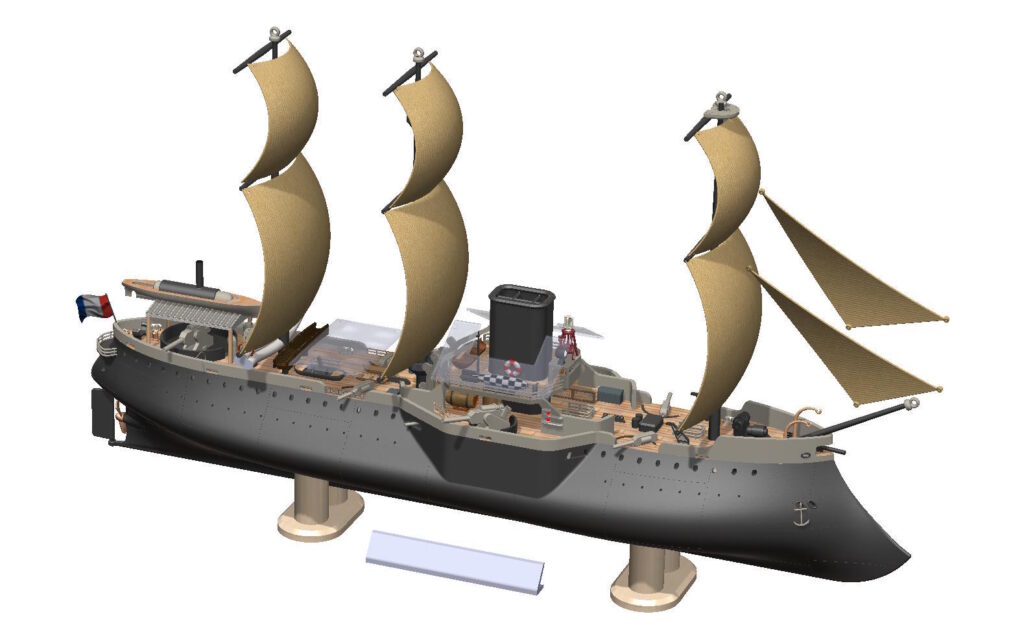
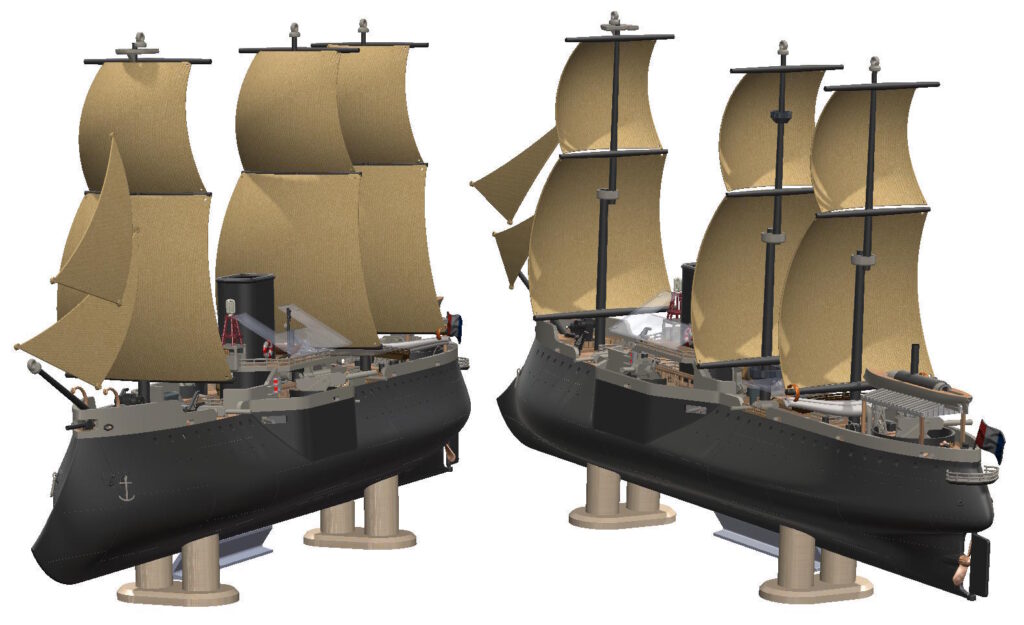
Continue reading for more info and your free STL file for a desktop Redoutable ship, sailing the high waves. If you want to proceed directly to our 100+ piece hi Rez STL file pack —> HERE IT IS.
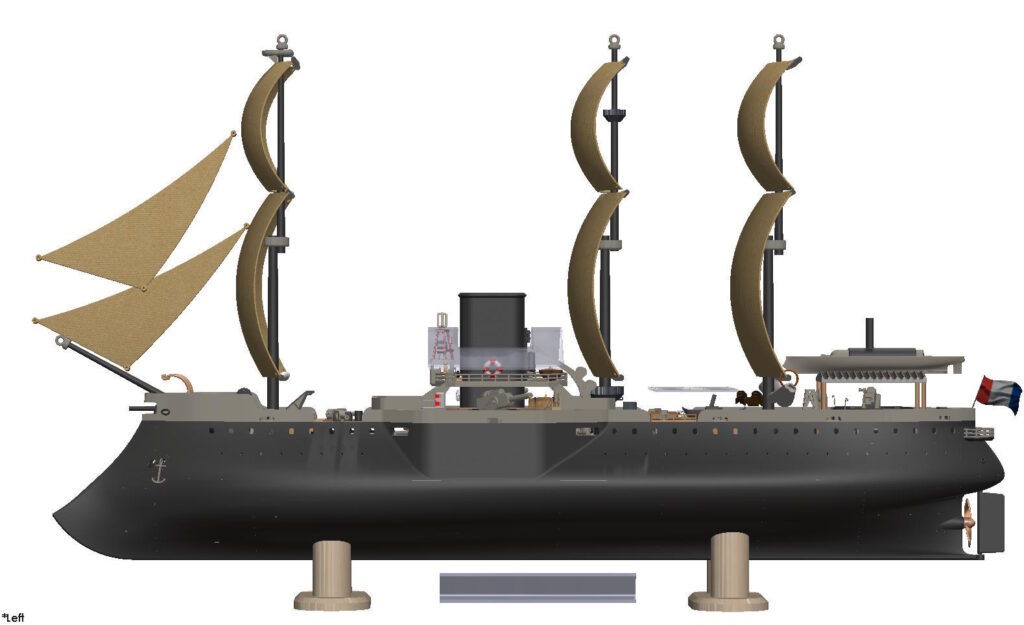
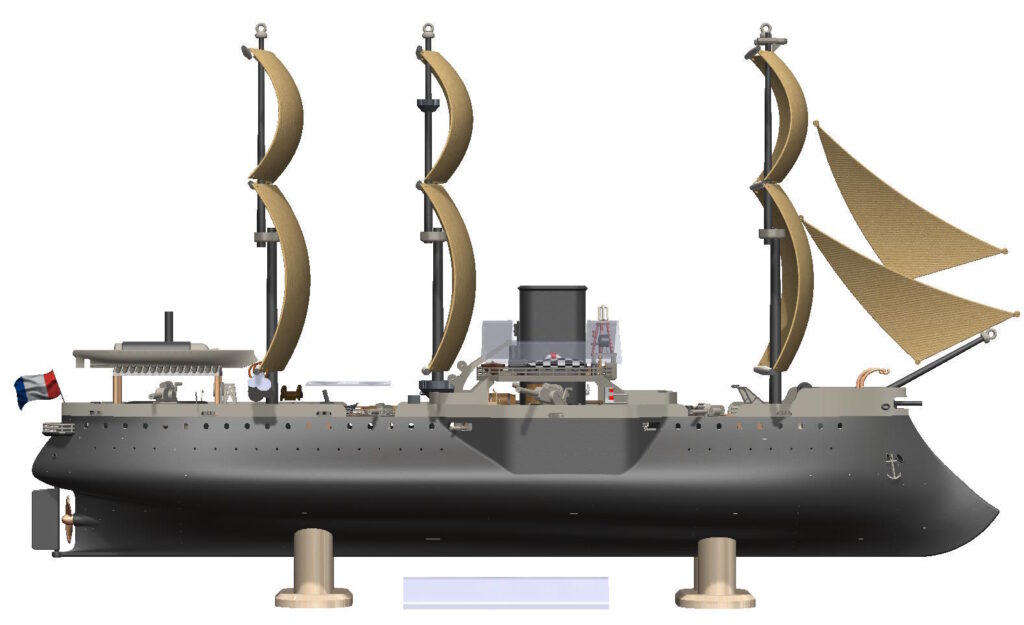
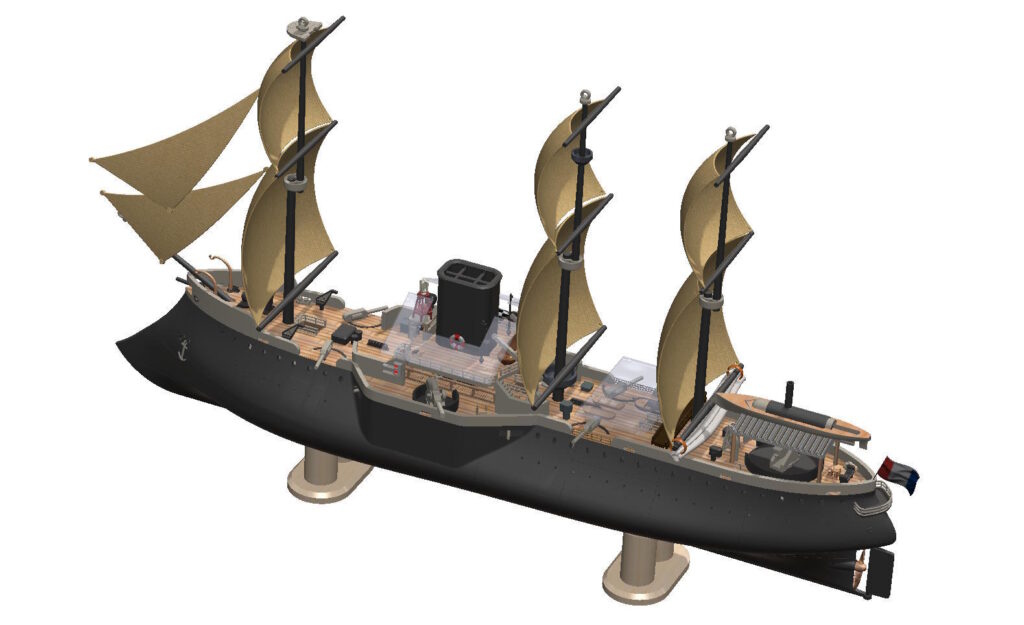
The Iron Heart of a Rising Navy
1. The Redoutable (1876)
Commissioned in 1878, Redoutable was not just any ironclad—it was a world first. This French battleship earned its place in naval history as the first warship ever to be constructed with an entirely steel hull. Earlier ironclads were mostly made of iron, or wood reinforced with iron plating. Steel, however, was lighter and stronger, enabling ships like Redoutable to carry heavier armament and thicker armor without compromising speed or seaworthiness.
- Displacement: ~8,800 tons
- Length: 101 meters
- Armament: 4 x 340 mm (13.4 in) guns in barbettes
- Armor: 350 mm (belt), 50 mm (deck)
- Speed: 14 knots
- Crew: ~740
Redoutable featured a central battery layout, with her heaviest guns housed in open-topped barbettes rather than enclosed turrets—a compromise between protection and weight. Her hull was armored with thick steel plating, and she could both steam and sail, though sails were soon phased out as naval doctrine changed.
Her revolutionary steel construction made her a trendsetter for future warship design. In naval circles across the globe, Redoutable‘s name became synonymous with French innovation.
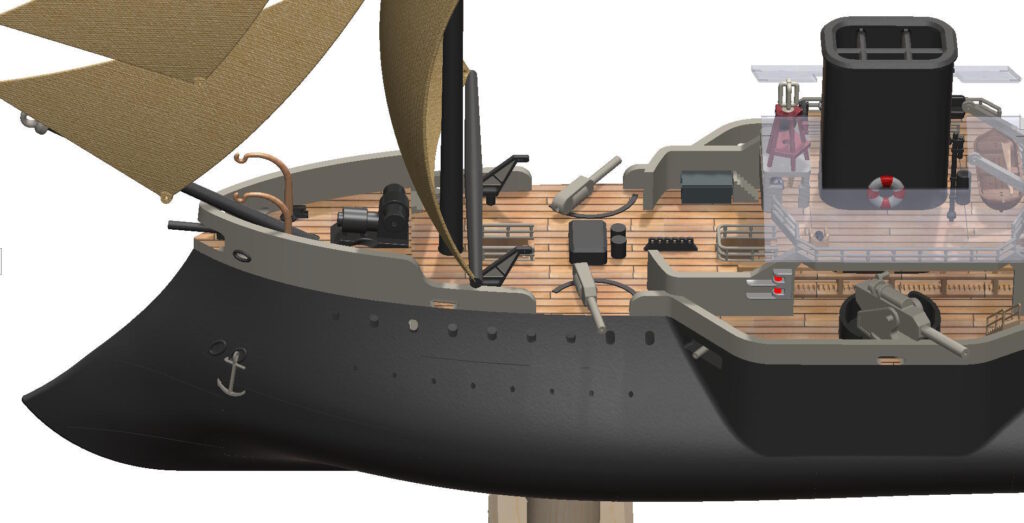

2. The Dévastation Class (1879–1883)
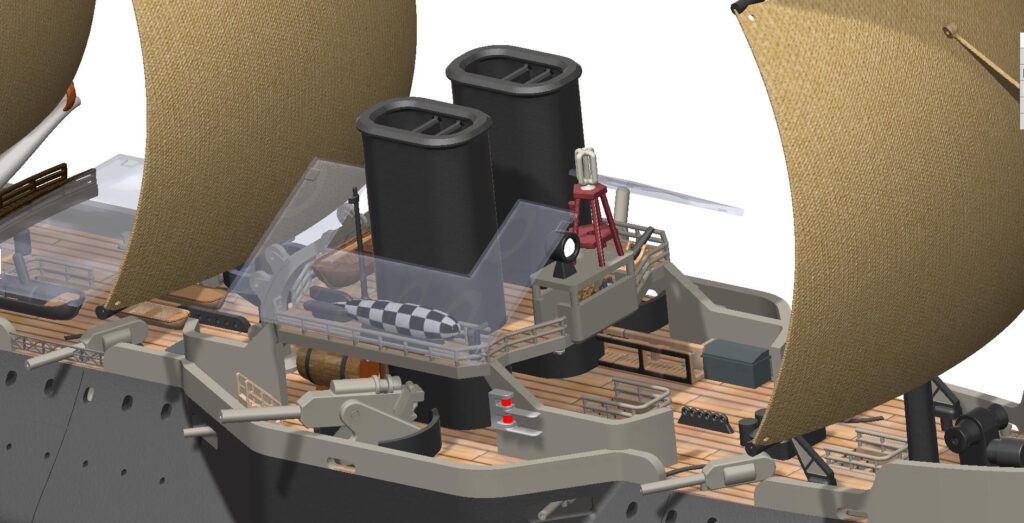
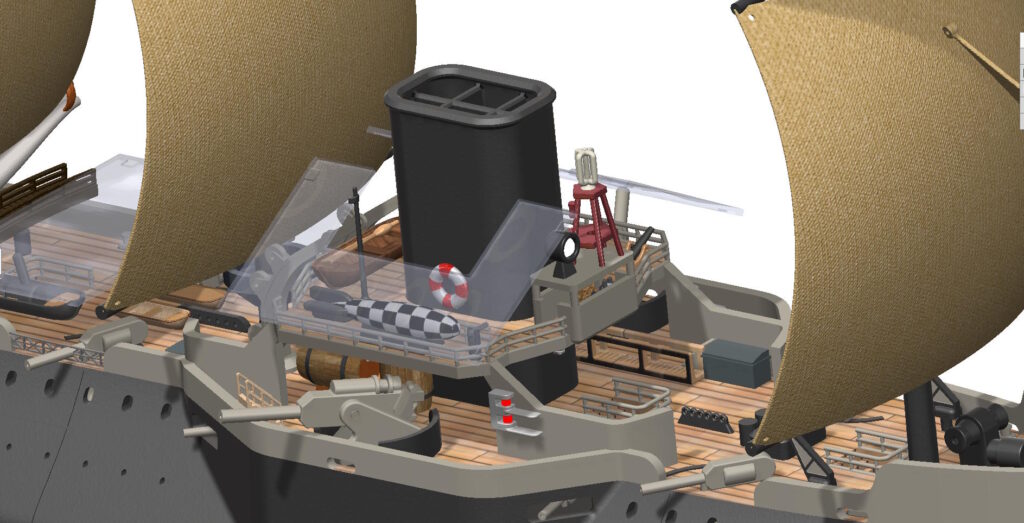
Building on the success of the Redoutable, the Dévastation-class ironclads—Dévastation and Courbet—were the next step in the French Navy’s evolution. These warships were larger, more heavily armed, and better protected. Though still transitional in design, they carried a powerful message: France was ready to challenge British naval dominance.
- Displacement: ~10,500 tons
- Length: ~100 meters
- Armament:
- 4 × 340 mm guns (two twin barbettes)
- 4 × 240 mm guns
- Numerous secondary guns and torpedo tubes
- Armor: 400 mm belt, with barbettes and conning tower heavily reinforced
- Speed: 14–15 knots
- Crew: ~700–800
The Dévastation-class retained the central battery concept but emphasized heavier broadside firepower, extensive armor protection, and better compartmentalization. They were also among the first French ships to completely abandon the traditional sailing rig, relying solely on steam engines for propulsion.
These ships were floating fortresses, designed to dominate coastal engagements and defend France’s maritime frontiers in the Mediterranean and the Channel. Though slower and less maneuverable than some later pre-dreadnoughts, they were crucial in transitioning French naval strategy from colonial support to full-spectrum fleet engagement.
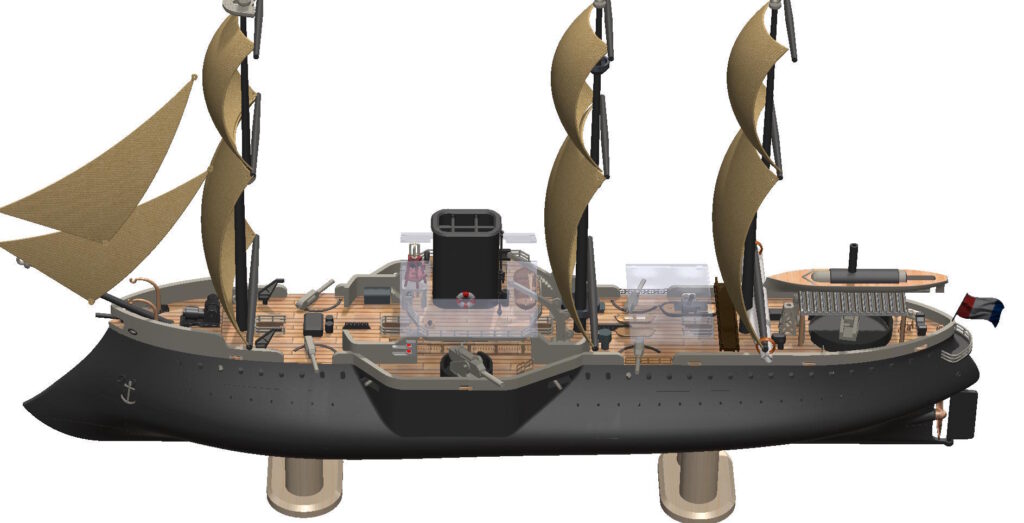
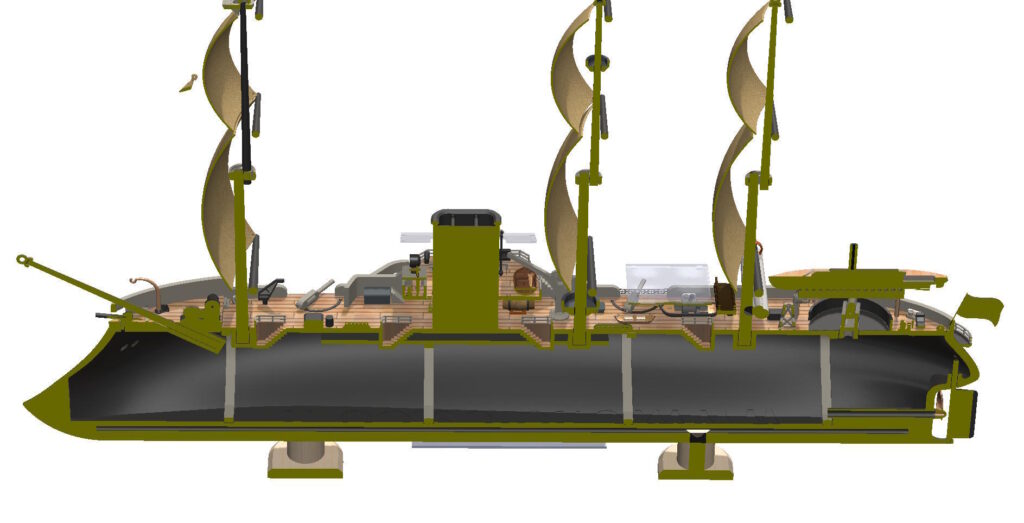
Strategic Context and Legacy
The Redoutable and Dévastation-class ironclads were built during a time of growing tension between France and Britain. Though the two powers avoided direct conflict in the 19th century, they were keenly aware of each other’s naval capabilities. The innovations demonstrated by these ships helped shape naval doctrine, inspire rival designs, and lay the foundation for the battleships of the 20th century.
France’s embrace of steel, heavy armor, and centralized firepower gave it a temporary technological edge. However, the rapid pace of naval innovation meant that even groundbreaking ships like Redoutable and Dévastation were rendered obsolete within decades—yet their influence lived on.
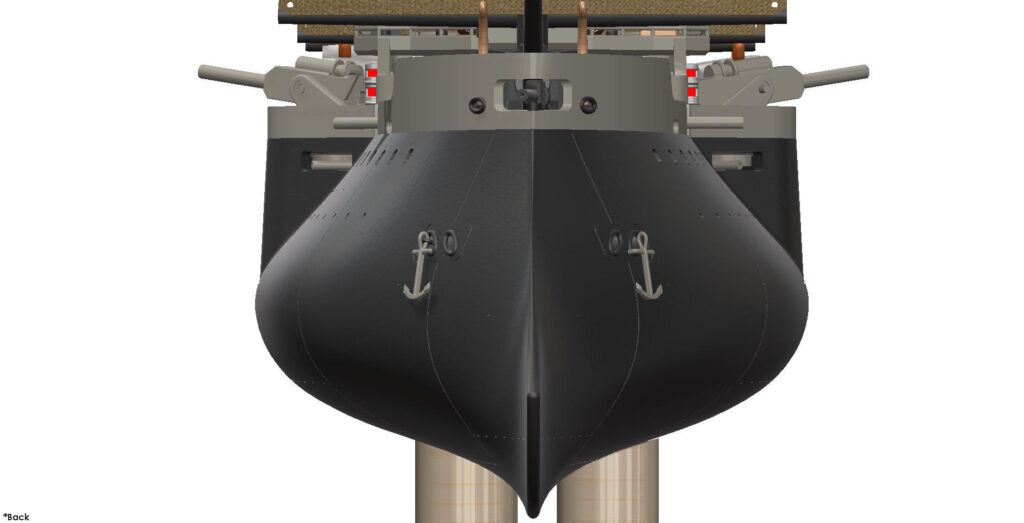
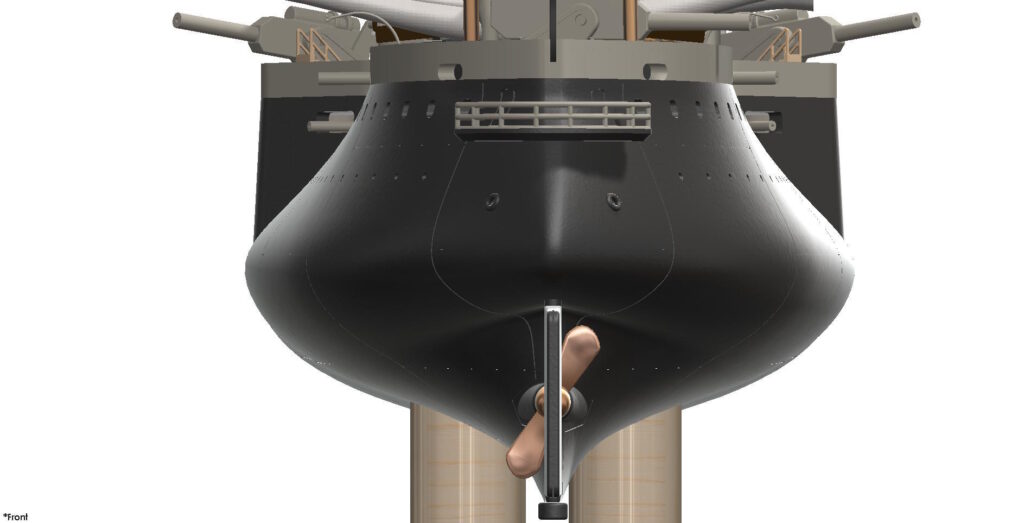
The Redoutable and Dévastation-class ironclads were more than machines of war—they were symbols of French ingenuity, ambition, and industrial might. They mark a critical turning point in naval architecture, bridging the gap between the experimental ironclads of the 1860s and the era of steel battleships that culminated in the dreadnought arms race.
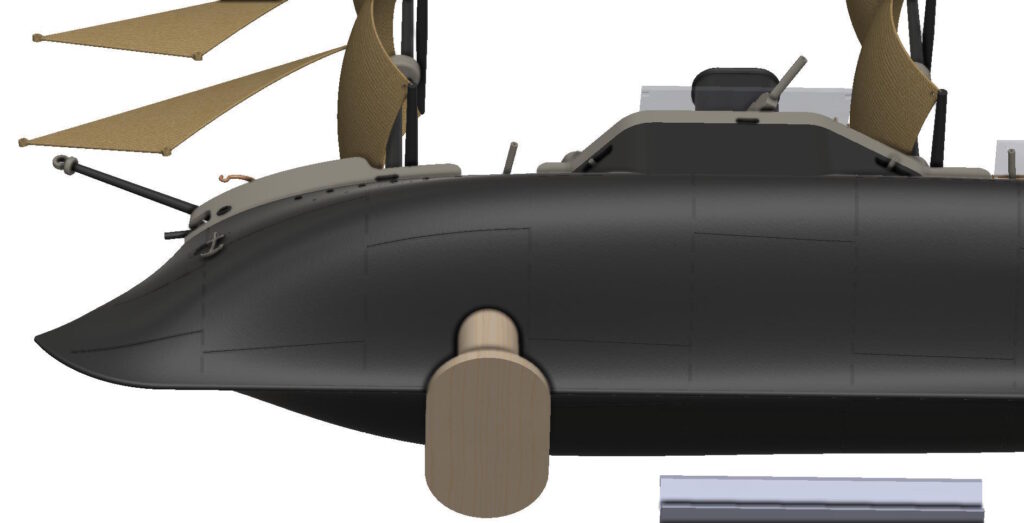
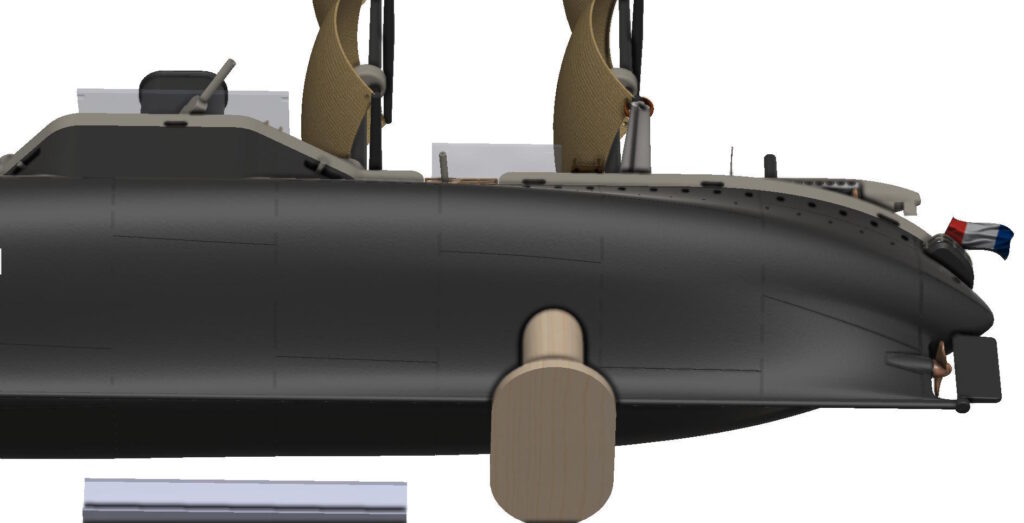
While these vessels are long gone, their legacy continues to resonate in naval museums, shipyards, and the very concept of modern naval warfare—where armor, firepower, and innovation remain the guiding principles of the sea.
We have a complete set of hi rez STL files to enable you to build your own ironclads, you can also convert them to RC as a project. 51 hi rez parts are included in this pack.
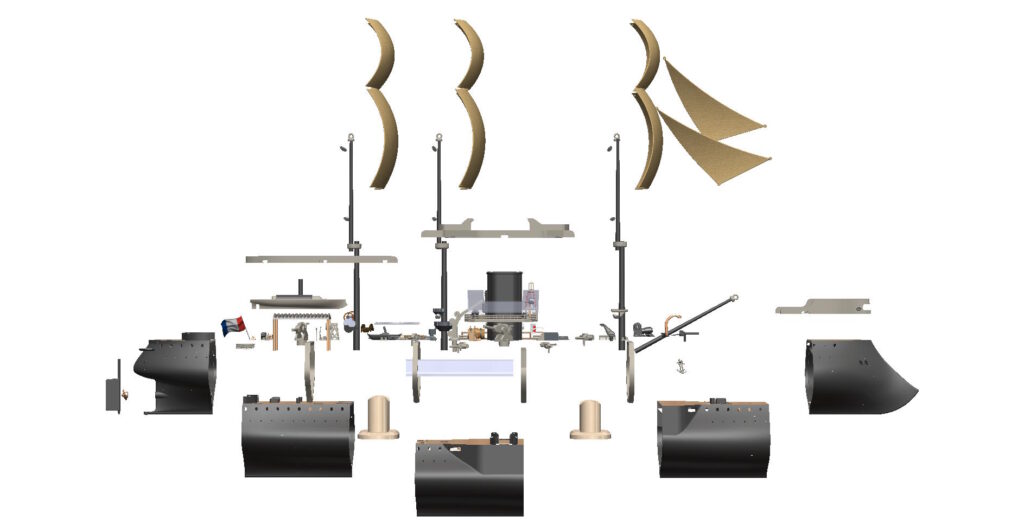
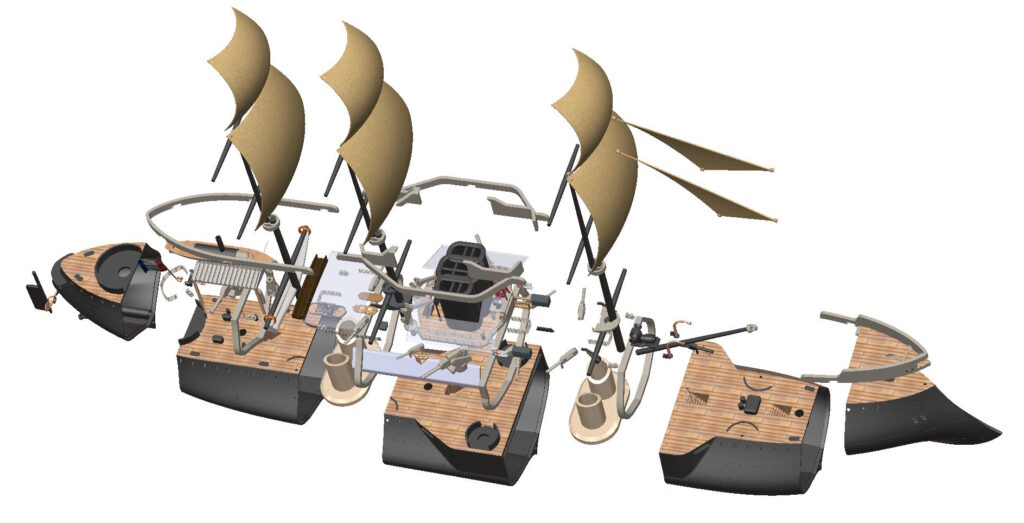
There is also a ship accesory pack included in this purchase. There are 57 different accesories, such as, gatling guns, cannons, dinghies, cranes, tripods, deck chests, air vents, even complete smaller-scale steamboats. 108 separate parts in total. All parts can be used multiple times on your model to create a detailed and full end-result. If you want to get this file pack —> HERE IT IS.
This model file you purchase includes our newest ship accesories file pack too. If you want to purchase only the ship accesories IT IS HERE. <<<——– get it
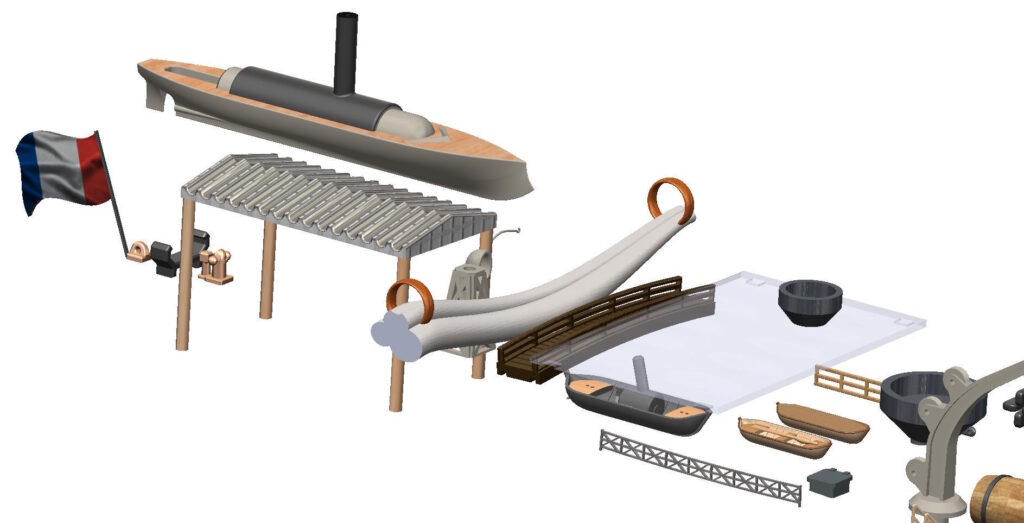
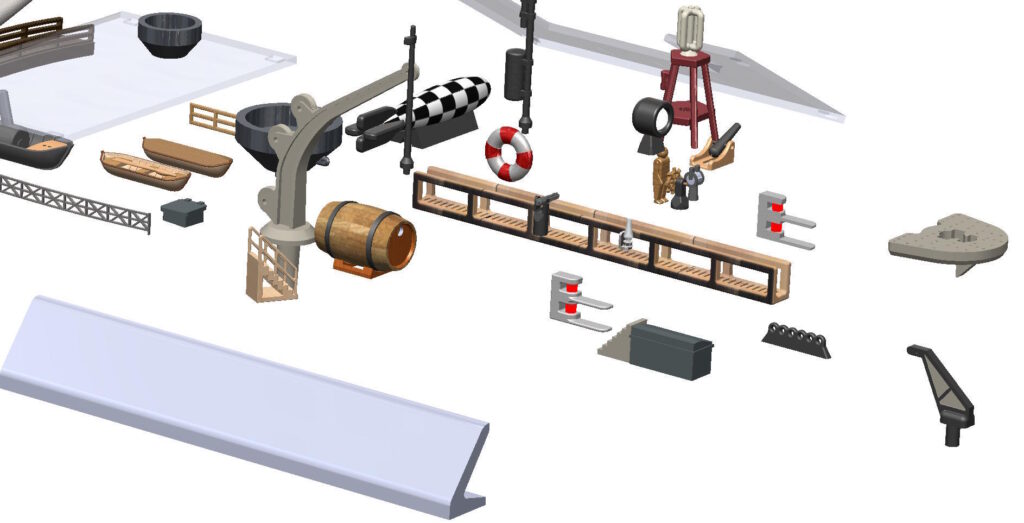
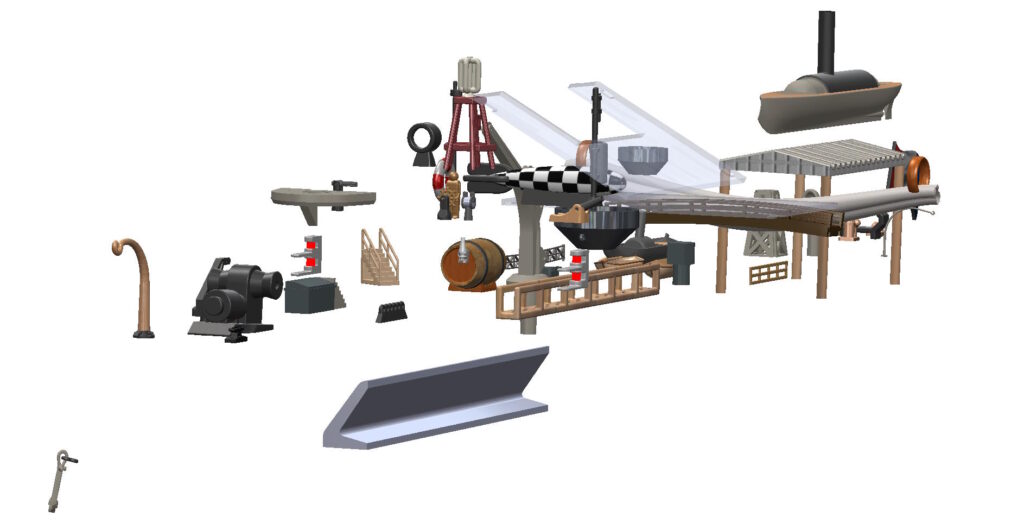
Your free desktop model is below. Please enjoy and share this website at your social media. Sharing buttons are at the side of the page. Thank you.
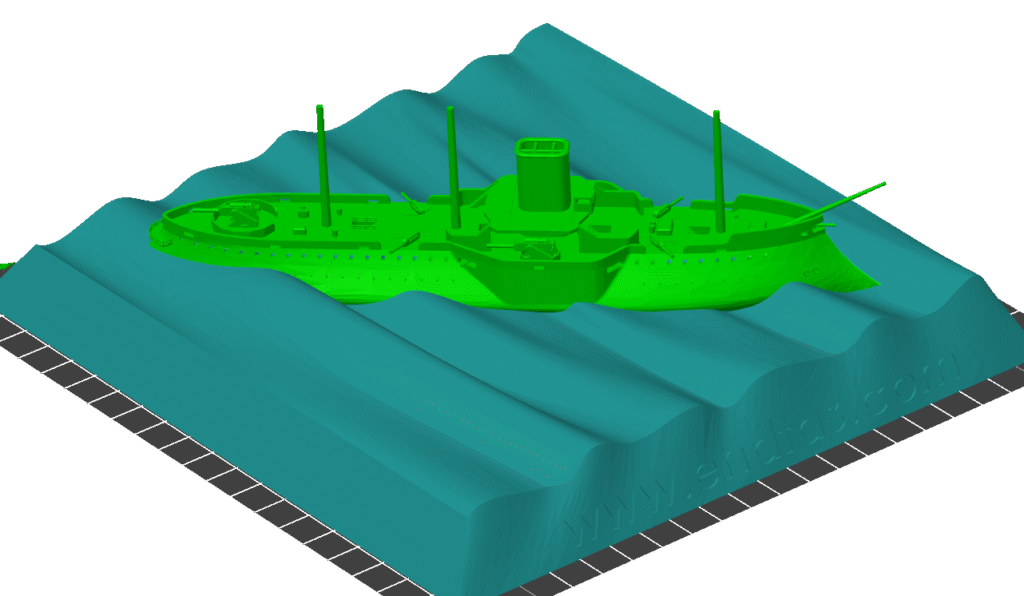






 Users Today : 51
Users Today : 51 Users Yesterday : 129
Users Yesterday : 129 Users Last 7 days : 860
Users Last 7 days : 860 Views Today : 63
Views Today : 63 Views Yesterday : 192
Views Yesterday : 192 Views Last 7 days : 1306
Views Last 7 days : 1306 Total views : 1325292
Total views : 1325292 Who's Online : 0
Who's Online : 0